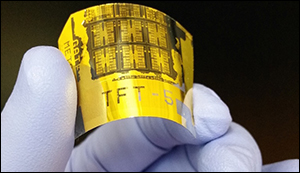Researchers Develop Fastest and Most Flexible Silicon Phototransistor Ever
6. 11. 2015 | UW-Madison | news.wisc.edu
Inspired by mammals' eyes, University of Wisconsin-Madison electrical engineers have created the fastest, most responsive flexible silicon phototransistor ever made.
The innovative phototransistor could improve the performance of myriad products - ranging from digital cameras, night-vision goggles and smoke detectors to surveillance systems and satellites - that rely on electronic light sensors. Integrated into a digital camera lens, for example, it could reduce bulkiness and boost both the acquisition speed and quality of video or still photos.

Developed by UW-Madison collaborators Zhenqiang Ma, professor of electrical and computer engineering, and research scientist Jung-Hun Seo, the high-performance phototransistor far and away exceeds all previous flexible phototransistor parameters, including sensitivity and response time.
One important aspect of the success of the new phototransistors is the researchers' innovative “flip-transfer” fabrication method, in which their final step is to invert the finished phototransistor onto a plastic substrate. At that point, a reflective metal layer is on the bottom. “In this structure - unlike other photodetectors - light absorption in an ultrathin silicon layer can be much more efficient because light is not blocked by any metal layers or other materials,” Ma says.
Read more at UW-Madison
Image Credit: UW-Madison
-jk-




